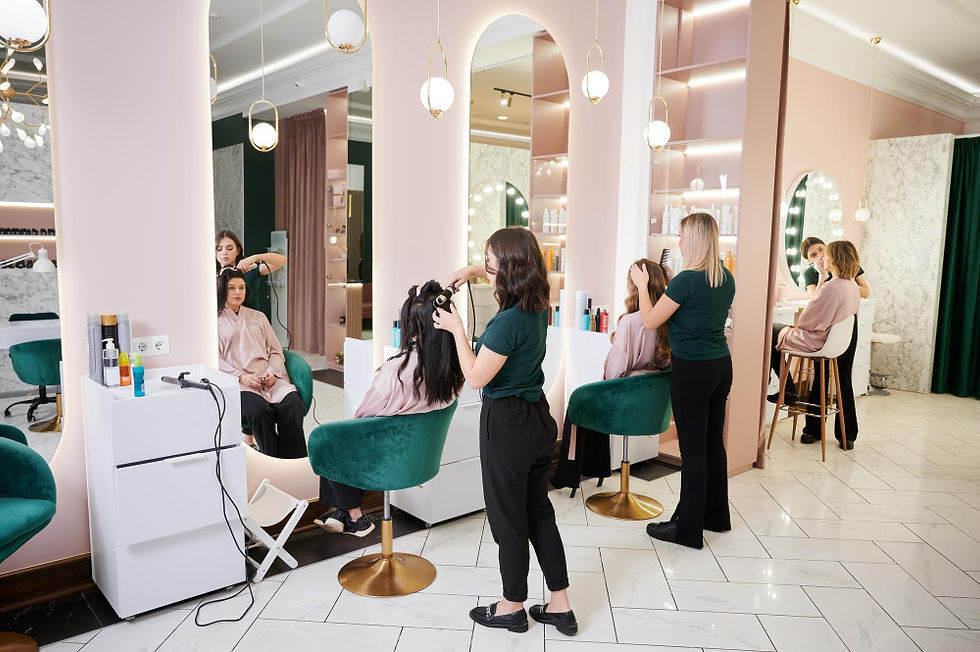Nail Pedicure Foot Care: Exfoliation and Moisturising Tips
- fionabeautyuk
- Sep 12
- 3 min read

A healthy life begins with beautiful feet, but many of us ignore it. Our feet need more than nail polish. Thus, you must stick to a proper care regimen that keeps the skin soft, smooth, and hydrated. A key part of any professional nail pedicure or at-home foot care routine is exfoliation and moisturising.
This blog covers expert tips on how to exfoliate and moisturise feet to maintain softness, prevent dryness, and promote general foot health. Dive into these easy-to-follow guidelines that will help keep feet looking and feeling their best all year round.
Why Exfoliation Is Essential for Pedicures?
Exfoliation is the process of removing dead skin cells from the surface of the feet, from heels and soles. Over time, feet accumulate thickened, dry skin that can lead to pain, cracked heels, and ugly calluses if not addressed.
Restores Smoothness: Exfoliating sloughs away dry and flaky skin, revealing softer, younger-looking skin underneath.
Prepares Feet for Moisturising: Removing dead skin allows moisturisers to penetrate deeper, improving hydration and nourishment.
Prevents Common Foot Problems: Regular exfoliation reduces the risk of developing painful calluses, corns, and cracked heels.
Boosts Circulation: The gentle scrubbing and massaging motions of exfoliation stimulate blood flow, promoting foot health and relaxation.
Manual vs Chemical Exfoliation: Choosing the Right Method
Manual Exfoliation
Manual exfoliation uses physical tools to buff away dead skin. Standard tools include pumice stones, foot files, and scrubs with abrasive granules like sugar or salt. These are effective after a foot soak when the skin is softened.
Professionals use pumice stones and metal foot files to target tough, hardened skin.
Grainy scrubs also nourish and cleanse the skin on softer areas, such as the top of the feet.
Manual exfoliation promotes quick visible improvements in smoothness.
Chemical Exfoliation
Chemical exfoliation uses alpha-hydroxy acids (AHAs), urea, or salicylic acid. These ingredients dissolve the bonds holding dead skin cells together. This nail pedicure method is excellent for sensitive skin sufferers or those prone to irritation from scrubbing.
Chemical exfoliants work gradually to improve skin texture without rough abrasion.
Ingredient choice matters—some act as moisturisers while others speed up skin cell turnover.
Used in professional settings or specialised foot masks.
Step-by-Step Exfoliation Tips for a Spa-Quality Pedicure
Warm Foot Soak: Begin with soaking your feet in warm water (add essential oils or salts if desired) to soften skin and open pores.
Apply Exfoliant: Use a foot scrub or a chemical exfoliating product, focusing on heels, balls of feet, and areas with rough skin.
Buff: With a pumice stone or foot file, remove dead skin. Avoid over-scrubbing, which can irritate.
Rinse and Dry: Wash off exfoliants and pat your feet dry with a soft towel.
Inspect for Calluses: If needed, use a gentle callus remover or consult a professional for thickened areas.
Why Moisturising Is a Must-After Exfoliation?
Exfoliation leaves the skin receptive to moisture. Thus, moisturising is the next critical step in foot care.
Moisturisers help replenish lost hydration and form a protective barrier on the skin.
Ingredients like urea, shea butter, coconut oil, and glycerin nourish dry, cracked feet.
Consistent moisturising prevents the recurrence of rough skin and maintains foot suppleness.
Applying moisturiser after exfoliation maximises absorption for long-lasting softness.
Best Moisturising Practices for Healthy Feet
Use a thick, rich foot cream daily before bed, when skin can repair and regenerate.
For extra hydration, apply a foot mask or overnight treatment to condition feet.
Consider wearing cotton socks after applying moisturiser at night to lock in moisture.
Hydration protects against dryness, cracking, and discomfort caused by environmental factors.
Opt for fragrance-free, hypoallergenic moisturisers if you have sensitive skin.
Extra Foot Care Tips for Lasting Results
Regularly schedule professional nail pedicure services for deep exfoliation and customised care.
Avoid harsh soaps and very hot water that strip natural oils from feet.
Drink plenty of water to support skin hydration from within.
Wear well-fitting, breathable footwear to reduce friction and sweating.
Protect your feet from sun damage by applying SPF if exposed to sunlight.
Conclusion:
Nail pedicure foot care involves much more than nail polish—effective exfoliation and deep moisturising are the twin pillars for maintaining radiant, healthy feet. Whether using manual scrubbing tools or gentle chemical exfoliants, the key is regular removal of dead skin followed by nourishing hydration.
With these easy tips, your feet will not only look smoother but also feel revitalised and comfortable all day. Embrace these practices at home or visit Fiona Beauty & Aesthetics for a professional nail pedicure in Uxbridge to enjoy baby-soft feet that carry you gracefully wherever life takes you.

Comments